Fields of promise
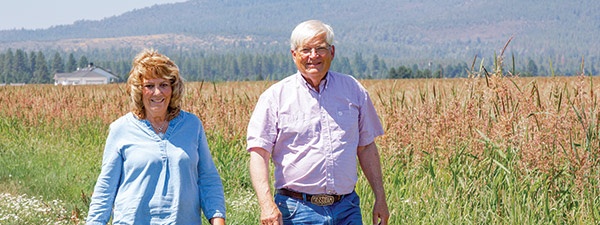
January/February 2023 California Bountiful magazine
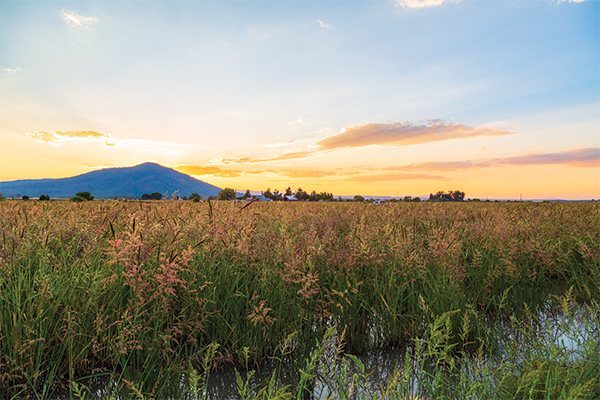
Versatile wild rice offers
untapped potential
Story by Ching Lee
Photos by Frank Rebelo
Next time you need a different twist on your favorite soup, salad or stuffing recipe, you might look to wild rice for a revamp.
The nutty, chewy, nutrient-dense grain makes for wonderful side dishes that can be turned into hearty meals with little fuss, says Shasta County farmer Mary Rickert. She and her husband, Jim, have been growing wild rice for more than 40 years.
“I think a lot of people are intimidated by wild rice, and they only think of it as something that they get in their pilaf,” Mary Rickert says. “They need to rethink the versatility of wild rice.”
One of her favorite ways to prepare it is to toss cooked wild rice with tomatoes, green onions, cilantro, grated cheddar cheese and Italian dressing. She calls this wild rice salad her “go-to dish” for potlucks “because, generally speaking, nobody else brings it.”
“It’s not another potato salad or macaroni salad,” she says.
That wild rice dishes are not as common as other standard potluck fare is something the Rickerts and others in the wild rice business would like to change.
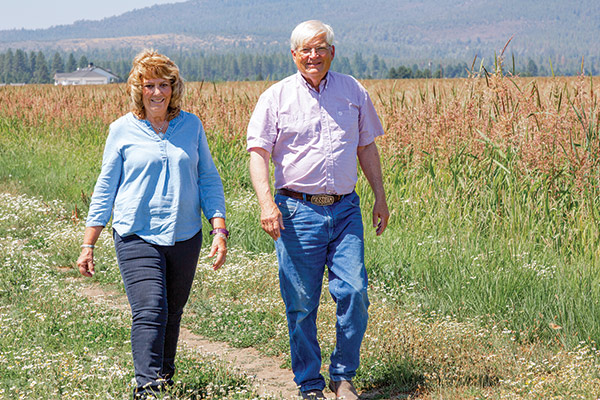
Changing its reputation
Rendy Christie, who markets wild rice for Alturas Ranches in Modoc County, says one of the biggest challenges she faces is trying to raise the profile of wild rice so that people are aware of it—and busting misconceptions that it’s difficult to cook. When she serves samples of wild rice at food shows, she says, most people tell her they can’t believe how good it is.
“They remember eating it years ago when they called it sticks and twigs because it took so long to cook, and it was so chewy and kind of hard,” she says.
Another misconception to overcome, Christie says, is the name itself. Wild rice, she notes, is not technically rice, even though it looks and cooks like other types of rice.
The long, slender, dark grain is the seed of an aquatic grass, just as regular rice and other cereal grains also are grasses. But white rice and wild rice are two different species, says Whitney Brim-DeForest, a University of California Cooperative Extension farm advisor. Whereas white rice originated in China and parts of Africa and has been cultivated for thousands of years, wild rice is native to North America, specifically the Upper Midwest, where Native Americans have harvested the crop in shallow lakes and slow-moving streams for generations.
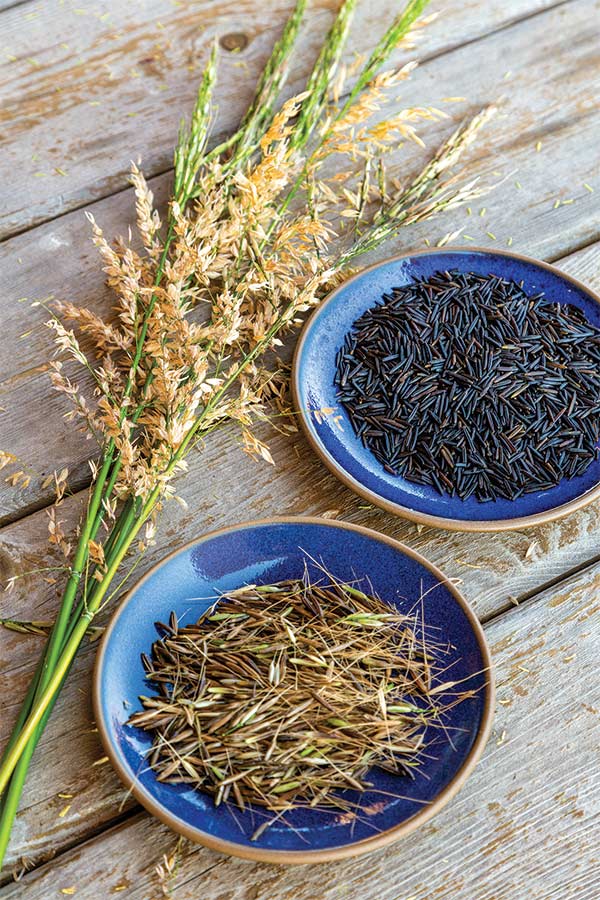
A relatively young crop
Despite its name, wild rice is not truly wild, Brim-DeForest says. But it’s not fully domesticated either, as the seeds tend to fall to the ground when the plant is mature, the way wild plants reproduce. Fully domesticated crops such as white rice or wheat that have undergone years of selective breeding retain their seed, so humans can harvest it, she adds.
“You could think of (wild rice) as a relatively young crop,” Brim-DeForest says. “It’s only been grown commercially in California since the 1970s. Before that, it was only grown in the Minnesota area.”
Wild rice was introduced to California farmers in 1972, using seeds from Minnesota. When Jim Rickert planted his first field in 1982, it was still considered a very new crop. He says he decided to try it because he wanted to grow something that other California farmers at the time didn’t grow.
Today, California represents one of two major growing regions for the grain. Its production accounts for more than half of the world’s wild rice. Minnesota remains the other top grower, with some production in Idaho, Oregon and Wisconsin, according to USA Rice Federation.
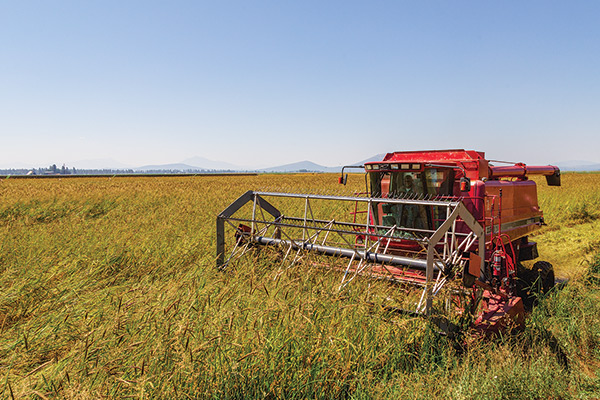
Wild rice: special and local
Most California wild rice acreage is found in the mountainous regions of Shasta, Lassen and Modoc counties, where the climate mimics the growing conditions of Minnesota. Some wild rice is also grown in the Sacramento Valley, which produces nearly all the state’s white rice.
Through the years, the Golden State has grown as many as 20,000 acres of wild rice and as few as 10,000 acres, depending on market conditions. It remains a small “specialty” crop compared to white rice, acreage of which has topped 500,000.
“It’s definitely a unique crop,” Brim-DeForest says. “There’s not that many crops that we grow in the United States anymore that are from the United States. If you’re trying to eat locally, wild rice would be one of the crops that would be quite local.”
Christie of Alturas Ranches, which has been growing wild rice for more than 35 years, says she thinks many consumers have yet to discover the “great nutritional value of wild rice,” which has dietary fiber and protein levels higher than regular white rice and most other grains.
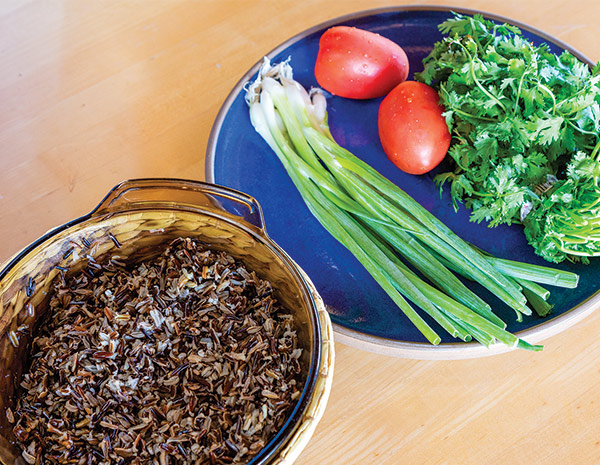
From breakfast to dessert
Christie says she likes to cook it ahead, refrigerate it and eat it for breakfast by adding milk, fresh or dried fruits, nuts, coconut, flax seed and “whatever you want to throw in there.” She adds that using wild rice in burgers, breads, cookies and other desserts adds color and texture.
Wild rice also lends heft and dimension to clam chowder and all kinds of soups, farmer Mary Rickert says. She has substituted wild rice for beans in chili. As an alternative to holiday cranberry sauce, she’s made gelatin with wild rice, whole cranberries and chopped walnuts.
For an earthy wintertime side dish, sauté sliced mushrooms, chopped onions, chopped celery and chunks of bacon, and then stir in cooked wild rice, Rickert recommends. This dish is so simple, Rickert says, yet “people just go crazy for it.”
She prefers to cook the rice in the oven using a covered casserole dish rather than in a rice cooker or on the stovetop. Baking it, she says, makes the rice come out “beautifully soft and tender” while also “puffy and light.” It’s important to cook it until all the water is absorbed and the kernels pop open, she says, because undercooked wild rice has a hard texture that’s difficult to chew. The oven method usually takes about an hour and a half to achieve the tenderness she prefers.
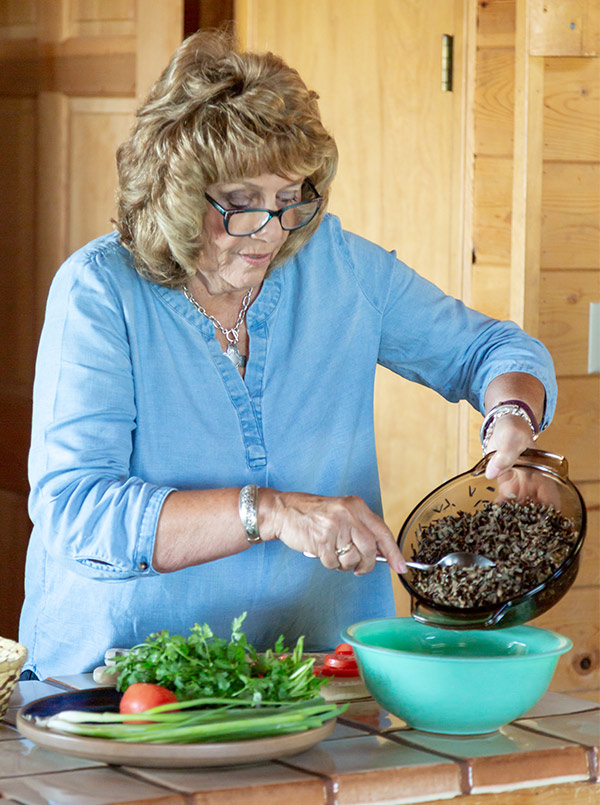
For speedier cooking, look for wild rice that has been scarified, which means the kernel’s outer bran has been mechanically scratched so water can be absorbed faster. The process retains the nutritional value of the grain but reduces the cooking time to 20 to 25 minutes, or 12 minutes in a pressure cooker, Christie says. Rice blends that combine wild rice with white rice use scarified wild rice so they have the same cooking time.
Humans are not the only creatures that have discovered the tastiness of wild rice. Jim Rickert says blackbirds “love this stuff, and they can decimate a field.” Damage can be so severe in some years that he’s left small fields behind rather than harvest what’s left of the crop.
Most deterrents he’s tried don’t work once the birds get used to them, he says. Noise guns, for example, “annoy my neighbors” more than they protect his crop. Other times he would blast loud music at the birds from his old pickup.
“Blackbirds don’t seem to like classical music,” Rickert says. “You could give them a little William Tell Overture or something, and they seem to fly off pretty good with that.”
California farmers also
grow 'regular' rice
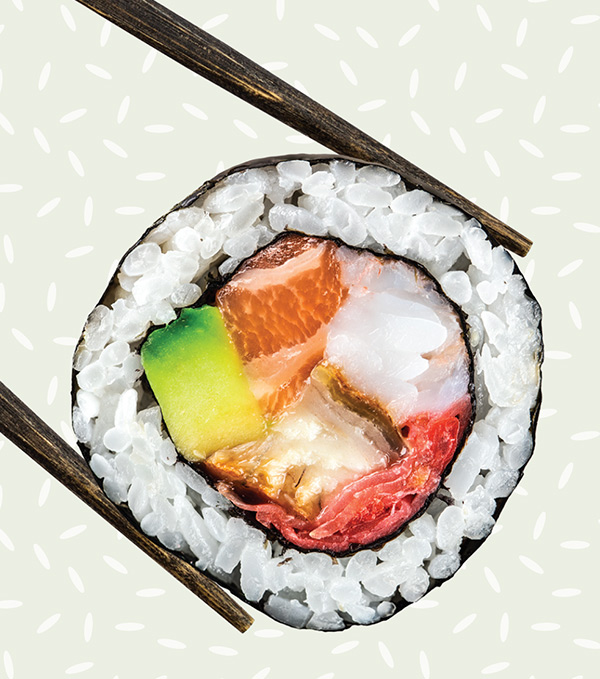
During the past 50 years, California became one of the world’s top producers of wild rice. The Golden State is also renowned for growing regular rice. It ranks behind Arkansas as the nation’s second largest rice-producing state.
Most of the state’s rice comes out of the Sacramento Valley, where Calrose remains the predominant variety. It is a type of japonica rice, which is often used to make sushi because of its short, round grain and soft, sticky quality.
As its name indicates, Calrose originated in California. It was developed by plant breeders at the Rice Experiment Station in Butte County, which released it to growers in 1948, according to the station. The “rose” refers to its kernel size, as it was named after an earlier medium-grain variety that was popular in the South. Having achieved world market recognition, the name stuck, even though new, improved varieties have been released through the years. That’s because Calrose by any other name would not be medium-grain rice from California.

